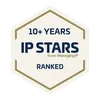How to budget and plan for patent costs?

Patent rights enable companies and individuals to protect the technical features of an invention, preventing competitors from selling a product and/or method incorporating those technical features. However, whilst patents rights can be of significant commercial benefit, they can also be more challenging to obtain than other Intellectual Property (IP) rights. In the paragraphs below, we explain the various stages of the patenting process and highlight the areas where companies and individuals can expect most costs to arise.
The first stage of obtaining patent protection is to draft and file a patent application describing the invention. Having a patent application drafted professionally is the best way of maximising the chances of obtaining meaningful and valuable protection for the invention, so it is well worth considering instructing a patent attorney to prepare your patent application for you. The drafting stage of any patent application involves a significant amount of work, so preparing this first application is one of the more cost-intensive stages of the process.
After filing the first application, typically no action is required for a period of twelve months after filing. During these twelve months, the applicant should seek to commercialise the invention, for example, by making and selling a product incorporating the invention and/or by approaching other companies who may license the patent application or take on the invention themselves.
At the end of the twelve-month period, the applicant must decide if they wish to protect the invention internationally. If international protection is desired, typically, an International (PCT) patent application claiming the filing date of the first patent application is filed. The filing of an international (PCT) patent application incurs significant official fees, so this stage of the process should be budgeted for well in advance.
Alternatively, the applicant may decide that they do not wish to protect the invention internationally and may decide instead to continue only with the first application. If the first application is a UK application, further costs will be incurred over a period of, on average, three to five years before any patent grant. These costs include the filing of formal documents at the patent office, as well as responding to any objections raised by the Examiner to the patentability of the application as filed.
Where an international (PCT) patent application is filed, then there is a further 18 month period where limited costs are incurred. However, towards the end of the eighteen-month period, the applicant must decide in which countries and regions they wish to protect the invention. At the end of the eighteen-month period, individual patent applications must be filed in each country and/or region of interest. The filing of these national and/or regional patent applications is the most cost-intensive stage of the entire process as the applicant must, in effect, file a separate patent application in each country and/or region of interest. The costs at this stage can vary significantly due to the specific fees and charges payable in each country. As such, if protection is to be sought in several countries, it is important funds are allocated to this stage of the procedure well in advance.
After the national and/or regional patent applications are filed, it usually takes between two and four years to progress those applications to grant. During this time, costs will be incurred to attend to the various objections raised by each national patent examiner and in attending to any necessary formal requirements before the relevant patent offices.
Finally, after grant, renewal fees will be payable to ensure any granted patents remain in force. For an extensive portfolio of patent rights, these renewal fees may be substantial. Therefore, we advise reviewing your portfolio to highlight any patent rights that are no longer of commercial relevance regularly.




















